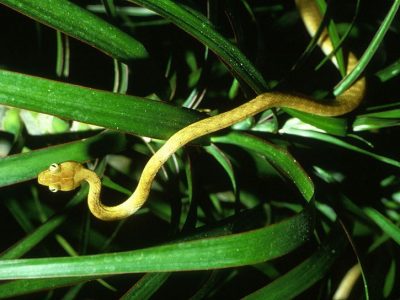If You Find a Snake in Your House or Yard
STAY CALM
KEEP CHILDREN AND PETS AWAY
KEEP YOUR DISTANCE, BUT KEEP AN EYE ON WHERE THE SNAKE GOES
CALLOUT FEES APPLY
COMMON VENOMOUS SNAKES AROUND SYDNEY
There are a variety of snakes found living among us. Some are venomous and others are virtually harmless to humans. Living within Sydney it is very common that you may come in contact with a snake while walking or doing general day to day activities. All animals should be treated with care and respect: Snakes are a natural part of the ecosystem and play a part in keeping things in balance.
Throughout NSW snakes are a protected species and it requires a permit to remove them. (If you find a snake in your house or back yard we offer a relocation service to remove the snake in a humane and safe manner. No snake is harmed or placed in an unsafe area. All handlers at Snake Catcher Sydney are fully trained professionals. Fees apply.
RED-BELLIED BLACK SNAKE

Red Bellies inhabit wetlands such as creeks and rivers although they may venture into suburban areas (usually due to habitat destruction) in search of food.
Females give birth to around 20 live young.
Diet: Mainly frogs but will also take small mammals and other reptiles.
EASTERN BROWN (COMMON BROWN) SNAKE
They are found in grass/woodlands but do tend to pass through backyards, sheds and houses (usually due to habitat destruction) in search of food and shelter.
Females can lay up to 35 eggs and a number of females can reuse the same nest.
Diet: Mainly feeds on small mammals but will also take birds, reptiles and frogs.
EASTERN TIGER SNAKE

The Eastern Tiger Snake has a broad habitat; ranging from rainforests to dry areas and even river floodplains.
Female gives birth to between 20 and 30 live young.
Diet: Mainly feeds on frogs but is not fussy and will also take small mammals and reptiles.
DEATH ADDER

These snakes live in a variety of different habitats including forests, woodlands and grasslands where it blends in perfectly with loose leaf litter. Being an ambush predator it hides in loose leaf litter or sand/dirt using its tail as a lure to attract prey.
Females give birth to up to 20 live young.
Diet: Feeds mainly on birds but would take small mammals.
BROWN TREE SNAKE
Brown trees snakes are a nocturnal, rear fanged colubrid, with two small, grooved fangs at the back of its mouth. Due to the placement of the fangs, venom is very difficult to convey into a bite on humans. The venom appears to be weakly neurotoxic, serious medical consequences have been limited to children who are more susceptible due to smaller body mass.
Their food sources are birds, Lizards, bats, rats and other rodents.
They are most commonly found in forests, grass lands and rocky stone outcrops.
GOLDEN CROWN SNAKE
These reptiles live in sandstone areas and deep forest.
Their diet consists of lizards, frogs and blind snakes.
A female Golden Crowned Snake will have a clutch of 2-15 eggs. They lay eggs in January and hatch in March.
GCS are a venomous snake, but they are not thought to be dangerous.
COMMON NON-VENOMOUS SNAKES AROUND SYDNEY
DIAMOND PYTHON
They are arboreal, so mainly found in trees, roofs and rock ledges. But can also be found on the ground in hollow logs and burrows.
Diet: Diamond Pythons feed mainly on marsupials but will take reptiles and mammals such as rats and mice. They are constrictors as they have no venom, therefore, they constrict their prey by coiling around and squeezing whilst holding the prey in its mouth which is loaded with hundreds of razor-sharp rear-facing teeth.
GREEN TREE SNAKE
Its’ habitat ranges from forest to woodland to urban areas. Its’ fangs are at the back of the jaw, so like the brown tree snake, it is very difficult to transmit the venom to a human by biting. It has a mildly toxic venom that is not regarded as dangerous to humans.
These snakes are active during the day and rest at night. Their diet is frogs, water skinks and other small reptiles. They will also eat fish, small mammals and geckos.
They lay 5-12 elongated eggs per clutch.
Although common tree snakes are essentially harmless to humans, they will defend themselves by producing a horrible odour and they may bite. Generally, they will try to make a quick getaway when they realise someone is watching them.
CARPET PYTHON
Diet: Consists mainly of frogs.
If You Find a Snake in Your House or Yard
STAY CALM
KEEP CHILDREN AND PETS AWAY
CALL: 1300 599 938
KEEP YOUR DISTANCE, BUT KEEP AN EYE ON WHERE THE SNAKE GOES
CALLOUT FEES APPLY
















